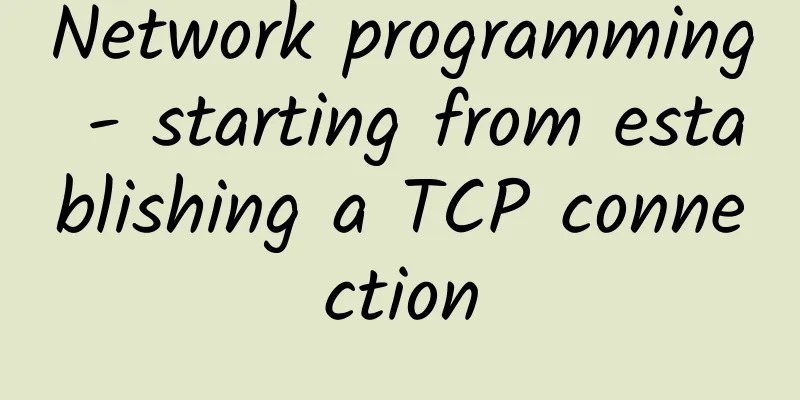F5 2020 State of Application Services Report Shows Asia Pacific Enterprises Concerned about Skills Gaps in Cybersecurity

|
F5 Networks recently announced that the company has released the "2020 Application Service Status Report (Asia Pacific Edition)". This is the sixth year that F5 has continuously released the Application Service Status Report. This year's survey found that with the deployment of multi-cloud and hybrid cloud architectures, IT and business process automation is on the rise. Many companies are beginning to realize the benefits of increased scale and speed of application deployment in their business, but at the same time it has brought greater complexity. Enterprises are increasingly relying on multiple public and private clouds on top of their original infrastructure, and need to implement modern application architectures, which has led to the face of evolving and complex threats.
At the same time, enterprises are adopting more application services, such as service mesh and ingress control, to accelerate deployment in public cloud and container-native environments. Survey data shows that this trend will accelerate as enterprises become more adept at leveraging the data delivered by their application ecosystem to achieve advanced analytical capabilities and better business results. However, most enterprises have not yet implemented a strong security architecture for their applications, and they focus on speed to market rather than security. “In today’s increasingly connected digital economy, the way businesses engage with their customers and drive revenue growth is directly dependent on the digital experiences enabled by applications,” said Adam Judd, senior vice president of F5’s Asia Pacific, China and Japan region. “In many ways, applications are no longer just part of the business – they are the business itself. This year’s report reveals a major issue that continues to plague businesses in Asia Pacific – the skills gap in cybersecurity. To seize growth opportunities and break through disruption cycles, businesses must invest in the talent, technology, and trusted partners that can build and deploy applications with greater speed, availability, and security across all environments.” The report reflects the opinions of nearly 2,600 respondents (including more than 1,300 from Asia Pacific) from multiple industries around the world and in a variety of roles in companies of different sizes. Respondents were asked to identify the challenges and opportunities they face in their digital transformation journey. Their responses provide unique insights into how the application landscape is evolving and how companies around the world are transforming to meet the changing demands of the digital economy. A deeper look at five key findings The survey points out that as enterprises need to manage traditional architectures, multi-cloud, hybrid cloud and modern architectures to deliver applications, their requirements for application services are also evolving. In order to cope with the challenges of limited skills and integration, enterprises are choosing open ecosystems that can provide standardization. Respondents all prefer application services that are both secure and easy to use. The main survey results in Asia Pacific show that the overall degree of digital transformation in the region is at the same level as the world, but a deeper study of the market survey data still highlights the subtle differences between enterprises in the region. Respondents from markets such as Australia, New Zealand, ASEAN and India said they have initiated multiple digital transformation projects, including incorporating emerging technologies into their business operations. However, respondents also consistently stated that enterprises in these markets face challenges with the proliferation of business applications. On the other hand, markets such as China, South Korea and Japan are still in the early stages of digital transformation, and relatively few companies are willing to implement emerging technologies such as artificial intelligence or application infrastructure automation. The report explores the following five key findings: 82% of businesses in Asia Pacific (global: 80%) are implementing digital transformation, with an increasing focus on speeding up time to market As enterprises continue to make progress in implementing digital transformation, IT and business process optimization initiatives are becoming more mature. Many enterprises have surpassed the initial stage of business process automation and are now expanding their digital footprint through cloud, container and orchestration technologies. This in turn has driven the creation of new ecosystems and a significant increase in API calls. For 60% of enterprises, applications are critical to the business; 38% of the surveyed enterprises stated that applications can support their business and bring competitive advantages. 86% of enterprises in Asia Pacific (global: 87%) adopt multi-cloud, with the majority still struggling to improve security. Enterprises use public clouds to participate in industry ecosystems, fully adopt cloud-native architectures, and deliver applications at the speed of business. The above results are confirmed by 28% of respondents in the Asia-Pacific region, who said that by the end of 2020, more than half of their enterprise applications will be deployed in the cloud. However, enterprises are much less confident in their ability to withstand application-layer attacks in public clouds than in local data centers. In Asia Pacific, 76% of enterprises say they have a significant skills gap in security. This contradiction shows that enterprises are growing in demand for easy-to-deploy solutions to ensure consistent security across multiple environments. 71% of businesses in Asia Pacific (global: 73%) are improving efficiency through network automation. Unsurprisingly, since optimizing IT and business processes is a primary driver of digital transformation, most organizations are automating their networks. Despite the challenges, organizations are steadily improving their capabilities and moving toward more consistent automation deployments across all key pipeline components (application infrastructure, application services, network, and security). 68% of enterprises in Asia Pacific (global: 69%) use more than 10 application services. As new cloud-native application architectures continue to mature and expand, more and more companies are deploying related application services, such as ingress control and service discovery, on-premises and in public clouds. Modern application environments require modern application services to meet the requirements of scalability, security, and availability. 63% of enterprises in Asia Pacific (global: 63%) still place primary responsibility for IT operations in the hands of application services, but more than half of those surveyed have also shifted this responsibility to teams with DevOps capabilities. Operations and infrastructure teams continue to bear the primary responsibility for selecting and deploying application services. However, as enterprises continue to expand their cloud-native and container-native application portfolios, DevOps groups will take on more responsibility for application services. |
<<: What does Huawei's ultra-high-density UPS module mean to data centers?
>>: Where will the evolution of SD-WAN go?
Recommend
Review and Outlook of China's 100-day 5G Licensing
Since June 6, when the Ministry of Industry and I...
As the demand for connectivity surges, 5G becomes the key to sustainable development of the ICT industry
[[343025]] As the global energy crisis intensifie...
How 5G's low latency will drive new applications and use cases
Why is low latency important for 5G? Latency is a...
iWebFusion: Los Angeles VPS starting at $9.38 per month, 4GB memory package, upgradeable to 10G bandwidth
iWebFusion (or iWFHosting) is a long-established ...
80VPS: Japan/Hong Kong VPS annual payment starts from 299 yuan, Los Angeles VPS annual payment starts from 199 yuan
80VPS, a well-established Chinese hosting company...
2024 Communications Conference | Towards a new era of smart distribution network construction, Ruijie Networks releases dual-plane distribution communication solution
Recently , the 2024 Energy Network Communication ...
Friendhosting offers 25% off on all sites, VPS in 11 data centers starting from 12 euros for half a year
Friendhosting has launched a SysAdmin Day Sale pr...
Summary information: CUBECLOUD/zorocloud/Eurasia Cloud/Bluemi Cloud
Recently, we have received product promotion info...
From I/O multiplexing to Netty, we also need to cross the Java NIO package
[[389262]] In the previous article, we took a dee...
Everything You Should Know About SFP Modules
In today's network environment, many users ar...
What the future of wide area network (WAN) management looks like
The recent surge in the number of employees worki...
Finding edge applications on 5G
5G is considered a key part of delivering edge co...
iQIYI Annual Card + JD Plus Membership Annual Card 138 RMB
This year, the prices of various video and music ...
If IT operations and maintenance fail to do this, congratulations, you will be blamed for this.
When it comes to IT operations and maintenance, m...
RackNerd cheap VPS summary starts from $9.89/year, self-service IP change, multiple data centers in Los Angeles/San Jose/Seattle/New York, etc.
Two months ago, I did a summary of RackNerd's...









